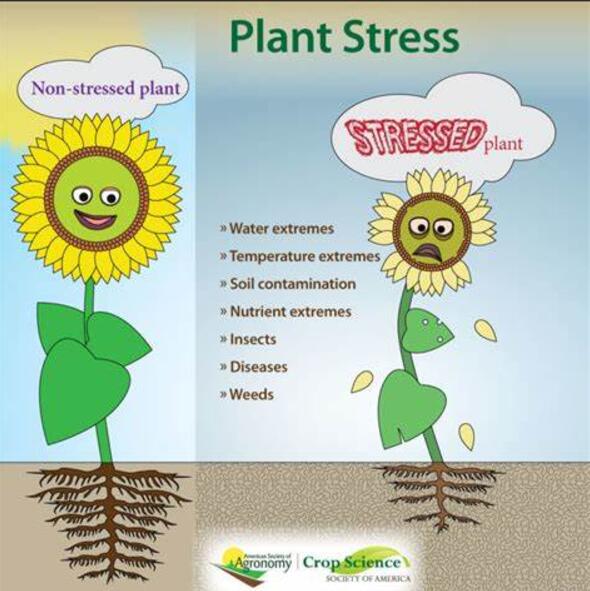赤松的生长、生理和生化对嗜木刺孢子虫侵袭的反应
IF 6.8
Q1 PLANT SCIENCES
引用次数: 0
摘要
本文章由计算机程序翻译,如有差异,请以英文原文为准。

Growth, physiological and biochemical responses of Pinus tabulaeformis to the infestation of Bursaphelenchus xylophilus
Pine wilt disease, a quarantine forest disease caused by Bursaphelenchus xylophilus, has brought huge threats to the forest ecosystems worldwide. The disease system is relatively complex, involving multiple factors such as nematodes, pine trees, and the environment. Its pathogenic mechanism and the disease-resistant mechanism of plants have not been fully elucidated yet. Pinus tabulaeformis is a key forest tree species with significant ecological importance. However, the physiological and biochemical response mechanisms of P. tabulaeformis to pine wilt disease are still not clear at present. Therefore, in this study, three-year-old potted seedlings of P. tabulaeformis were used as the research materials. For each treatment (control and nematode inoculation), a total of 9 potted seedlings with uniform growth were selected, with 3 pots for observing symptoms, 3 pots for measuring physiological and biochemical parameters, and 3 pots kept as spares. The growth, physiological, and biochemical parameters of the needles of P. tabulaeformis after inoculation with B. xylophilus were observed and measured. The results demonstrated that in comparison with the control group, nematode inoculation caused the content of chlorophyll a + b in the needles of P. tabulaeformis increased by 20.1 % at 1 day post inoculation (p > 0.05), but decreased by 4.8 % (p > 0.05), 24.1 % (p < 0.01), 52.9 % (p < 0.01), and 48.9 % (p < 0.001) at 3, 7, 15, and 30 days post inoculation (dpi), respectively. Meanwhile, nematode inoculation led to the withering and yellowing of some needles during the later stage of inoculation. Besides, nematode infestation causes a significant increase in electrolyte leakage (EL) by 12.9 % at 30 dpi (p < 0.01). Furthermore, the production rate of superoxide anion radicals (O2˙¯) increased by 55.3 % at 7 dpi (p < 0.01) under nematode infestation, followed by a 30.2 % significant reduction at 30 dpi (p < 0.05). Moreover, B. xylophilus inoculation resulted in a reduction in catalase (CAT) activity and total phenolic content while inducing a higher level of salicylic acid (SA) and jasmonic acid (JA) content and superoxide dismutase (SOD) activity. These findings demonstrate that nematode infestation causes certain harm to pine trees, but some disease-resistant substances within the pine trees will also be activated to resist the invasion of pine wood nematode. The results obtained from this research will lay a foundation for further understanding the disease resistance mechanism of pine wilt disease as well as its prevention and control.
求助全文
通过发布文献求助,成功后即可免费获取论文全文。
去求助
来源期刊

Plant Stress
PLANT SCIENCES-
CiteScore
5.20
自引率
8.00%
发文量
76
审稿时长
63 days
期刊介绍:
The journal Plant Stress deals with plant (or other photoautotrophs, such as algae, cyanobacteria and lichens) responses to abiotic and biotic stress factors that can result in limited growth and productivity. Such responses can be analyzed and described at a physiological, biochemical and molecular level. Experimental approaches/technologies aiming to improve growth and productivity with a potential for downstream validation under stress conditions will also be considered. Both fundamental and applied research manuscripts are welcome, provided that clear mechanistic hypotheses are made and descriptive approaches are avoided. In addition, high-quality review articles will also be considered, provided they follow a critical approach and stimulate thought for future research avenues.
Plant Stress welcomes high-quality manuscripts related (but not limited) to interactions between plants and:
Lack of water (drought) and excess (flooding),
Salinity stress,
Elevated temperature and/or low temperature (chilling and freezing),
Hypoxia and/or anoxia,
Mineral nutrient excess and/or deficiency,
Heavy metals and/or metalloids,
Plant priming (chemical, biological, physiological, nanomaterial, biostimulant) approaches for improved stress protection,
Viral, phytoplasma, bacterial and fungal plant-pathogen interactions.
The journal welcomes basic and applied research articles, as well as review articles and short communications. All submitted manuscripts will be subject to a thorough peer-reviewing process.
 求助内容:
求助内容: 应助结果提醒方式:
应助结果提醒方式:


